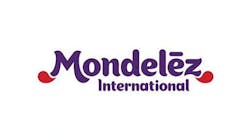Mondelez International Reports 2017 Results
Full-Year Highlights
- Operating income margin was 13.5%, up 360 basis points; Adjusted Operating Income1 margin was 16.3%, up 130 basis points
- Diluted EPS was $1.91, up 81.9%; Adjusted EPS1 was $2.14, up 14.5% on a constant-currency basis
- Net revenues declined (0.1)%; Organic Net Revenue1 grew 0.9%
- Returned $3.4 billion in capital to shareholders
DEERFIELD, Ill., Jan. 31, 2018 (GLOBE NEWSWIRE) -- Mondelēz International, Inc. (NASDAQ:MDLZ) today reported its fourth quarter and full-year 2017 results.
"We are pleased with the solid results for 2017," said Brian Gladden, Chief Financial Officer. "We delivered a strong year of margin expansion and earnings growth, marking significant progress from four years ago. Our improved top-line performance was fueled by our Power Brands and favorable trends in emerging markets."
"I'm very excited about the opportunities ahead to create value at Mondelēz International," said Dirk Van de Put, Chief Executive Officer. "We have strong foundational pillars in place, and we enter the year with improving momentum in our business. Our 2018 plan reflects an emphasis on execution, ongoing improvements in top-line growth and continuing actions to expand margins. As we develop our long-term strategic plan for sustainable growth, we're focused on how we can optimize and accelerate our strengths to create more moments of joy for our consumers, customers, communities, colleagues and shareholders."
Fourth Quarter Commentary
- Net revenues increased 2.9 percent, driven by currency and Organic Net Revenue growth partly offset by divestiture impacts. Organic Net Revenue increased 2.4 percent, which includes a positive impact of approximately 60 basis points from India demonetization in the prior year.
- Gross profit margin was 38.2 percent, flat to the prior year, as favorable impacts from commodity hedging activities and divestitures were offset by incremental costs due to the malware incident and higher 2014-2018 Restructuring Program implementation costs. Adjusted Gross Profit1 margin was 39.2 percent, flat to the prior year, driven by cost inflation and unfavorable mix, offset by improved pricing and net productivity gains.
- Operating income margin was 12.1 percent, up 460 basis points, driven by lower 2014-2018 Restructuring Program costs, higher Adjusted Operating Income margin and the lapping of the prior year's intangible asset impairment. Adjusted Operating Income margin expanded 180 basis points to 15.9 percent. These results reflected reductions in selling, general & administrative costs and supply chain productivity savings.
- Diluted EPS was $0.53, up 783 percent, driven by the lapping of the prior year loss on debt extinguishment, lower intangible asset impairment costs and a net benefit from U.S. tax reform.
- Adjusted EPS was $0.57 and grew 21 percent on a constant-currency basis, driven primarily by operating gains.
- Capital Return: The company repurchased approximately $400 million of its common stock and paid approximately $300 million in cash dividends.
- Tax Rate: The enactment of U.S. tax reform in December 2017 resulted in a discrete net tax benefit of $59 million in the fourth quarter. Elements of this benefit include a tax on the company's accumulated foreign earnings (estimated $1.3 billion cost) and the revaluation of its net U.S. deferred tax liability (estimated $1.3 billion benefit). As a result, the company's reported effective tax rate, which includes these discrete tax impacts, was 24.6 percent for the fourth quarter and 22.0 percent for the full year. The company's Adjusted Effective Tax Rate1, which excludes the discrete net tax impacts, was 24.5 percent for the fourth quarter and 22.8 percent for the full year.
Full-Year Commentary
- Net revenues decreased 0.1 percent, driven by divestitures that offset Organic Net Revenue growth and currency tailwinds. Organic Net Revenue increased 0.9 percent, which included a negative impact of approximately 40 basis points from the June malware incident.
- Gross profit margin was 38.9 percent, a decrease of 20 basis points, driven primarily by Adjusted Gross Profit margin contraction and the impact from the malware incident costs, partially offset by lower 2014-2018 Restructuring Program implementation costs and lower mark-to-market impacts from commodity and currency derivative contracts. Adjusted Gross Profit margin was 39.8 percent, a decrease of 30 basis points. Higher input costs and unfavorable volume/mix more than offset net productivity gains and improved pricing net of select trade investments.
- Operating income margin was 13.5 percent, up 360 basis points, driven by Adjusted Operating Income margin expansion, lower 2014-2018 Restructuring Program costs, benefits from the resolution of tax matters and a net gain on divestitures, partially offset by malware incident incremental expenses. Adjusted Operating Income margin expanded 130 basis points to 16.3 percent. These results reflected supply chain productivity savings and reductions in overhead costs.
- Diluted EPS was $1.91, up 82 percent, driven by the lapping of the prior year loss on debt extinguishment, benefits from the resolution of tax matters, lower 2014-2018 Restructuring Program costs, net gains from divestitures and a net benefit from U.S. tax reform.
- Adjusted EPS was $2.14 and grew 15 percent on a constant-currency basis, driven primarily by operating gains, lower interest expense and lower shares outstanding.
- Capital Return: The company returned $3.4 billion of capital to shareholders through share repurchases and dividends. Today, the company's Board of Directors approved a $6 billion increase to the company's share repurchase authorization from $13.7 billion to $19.7 billion and extended the expiration date of the program to December 31, 2020.
